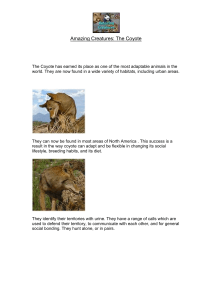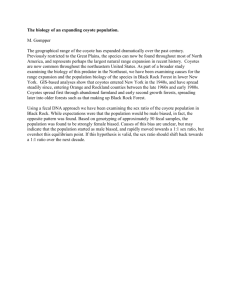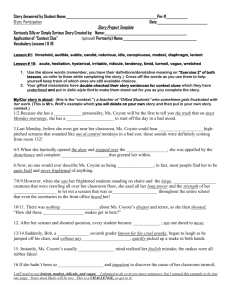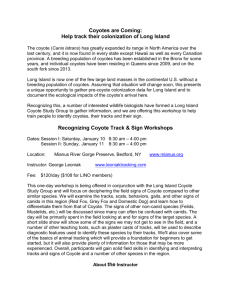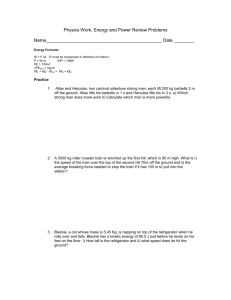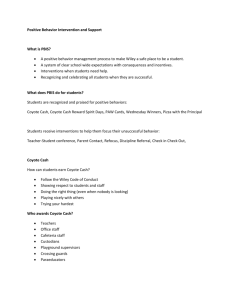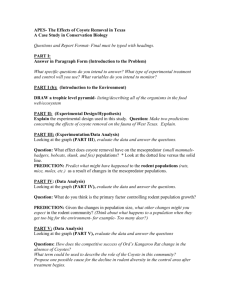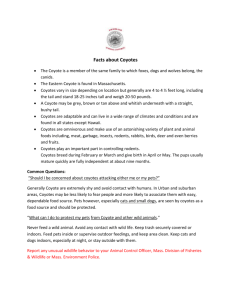Volcano Project Grading Sheet
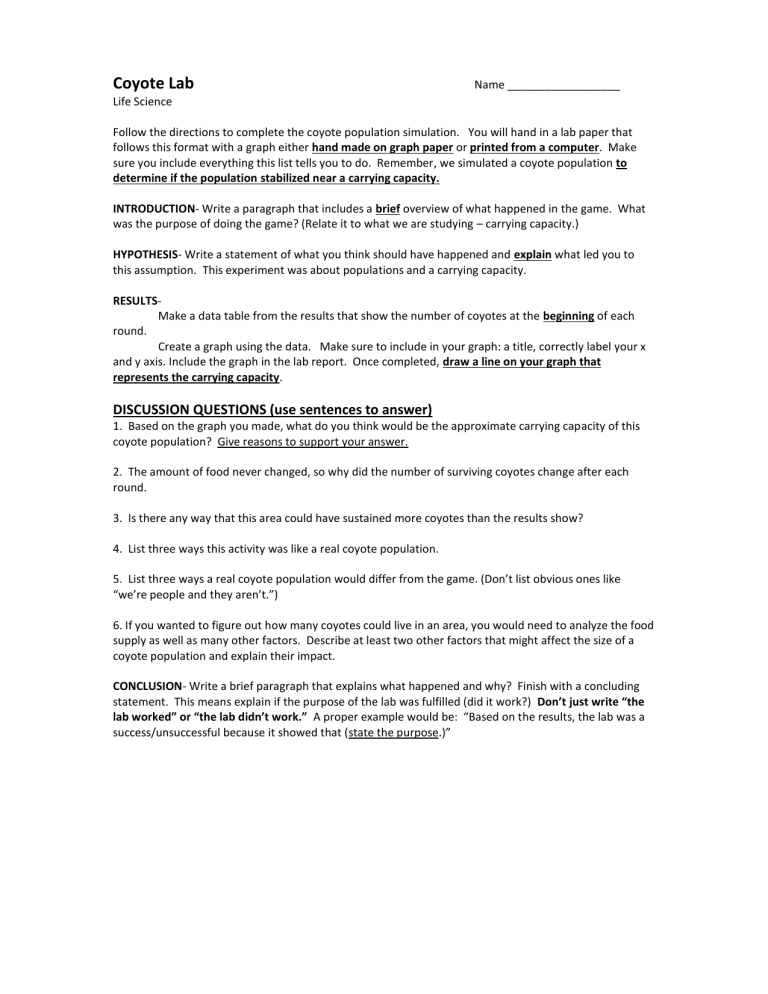
Coyote Lab
Life Science
Name __________________
Follow the directions to complete the coyote population simulation. You will hand in a lab paper that follows this format with a graph either hand made on graph paper or printed from a computer. Make sure you include everything this list tells you to do. Remember, we simulated a coyote population to
determine if the population stabilized near a carrying capacity.
INTRODUCTION- Write a paragraph that includes a brief overview of what happened in the game. What was the purpose of doing the game? (Relate it to what we are studying – carrying capacity.)
HYPOTHESIS- Write a statement of what you think should have happened and explain what led you to this assumption. This experiment was about populations and a carrying capacity.
RESULTS-
Make a data table from the results that show the number of coyotes at the beginning of each round.
Create a graph using the data. Make sure to include in your graph: a title, correctly label your x and y axis. Include the graph in the lab report. Once completed, draw a line on your graph that
represents the carrying capacity.
DISCUSSION QUESTIONS (use sentences to answer)
1. Based on the graph you made, what do you think would be the approximate carrying capacity of this coyote population? Give reasons to support your answer.
2. The amount of food never changed, so why did the number of surviving coyotes change after each round.
3. Is there any way that this area could have sustained more coyotes than the results show?
4. List three ways this activity was like a real coyote population.
5. List three ways a real coyote population would differ from the game. (Don’t list obvious ones like
“we’re people and they aren’t.”)
6. If you wanted to figure out how many coyotes could live in an area, you would need to analyze the food supply as well as many other factors. Describe at least two other factors that might affect the size of a coyote population and explain their impact.
CONCLUSION- Write a brief paragraph that explains what happened and why? Finish with a concluding statement. This means explain if the purpose of the lab was fulfilled (did it work?) Don’t just write “the
lab worked” or “the lab didn’t work.” A proper example would be: “Based on the results, the lab was a success/unsuccessful because it showed that (state the purpose.)”
Coyote Lab Report Grading Sheet
Name:
Section:
Graph
Graph is correctly labeled and has a title
Graph is has consistent units along its axis.
Graph shows what the carrying capacity is.
Graph takes up more than half a page.
Lab Report
Lab report has the proper format, spelling, and grammar.
Your introduction clearly states the problem you are solving and gives the reader background information on your simulation.
Your hypothesis states what you think should happen in your experiment and what led you to this assumption.
Your results have a data table that clearly represents the data you collected and has your graph.
Your discussion should thoughtfully and completely address all of the discussion questions. Questions should be answered in complete sentences unless it asks you to “list.”
Your conclusion summarizes your lab and explains your results and how they relate to your hypothesis.
Total Points
Comments
Points
2
4
2
2
5
5
5
5
5
5
40
Self -
Score
Actual
Score
